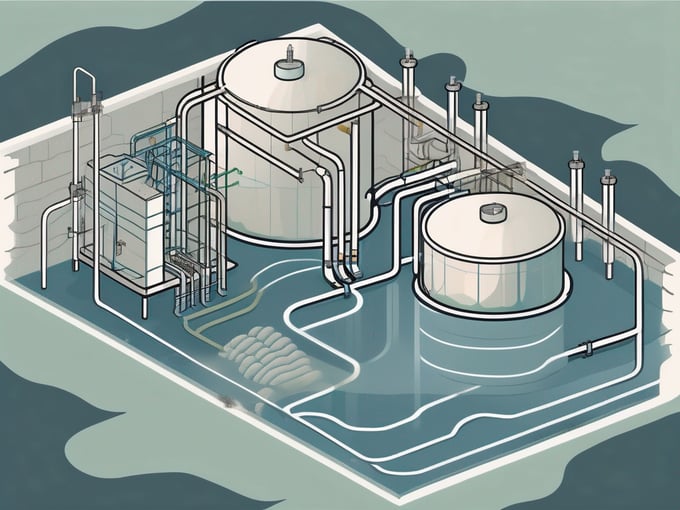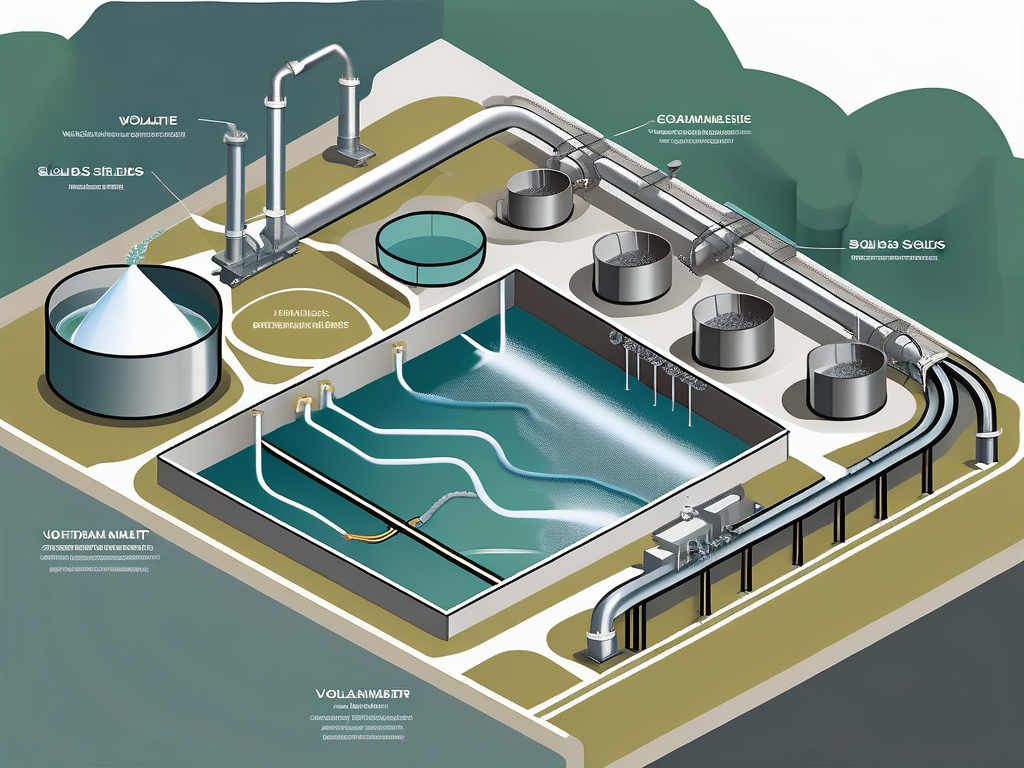
Volatile Solids: Wastewater Treatment Explained
Volatile Solids (VS) are a critical component in wastewater treatment, representing the organic materials that can be volatilized at high temperatures. Understanding their role and how they are managed is essential for any professional working in the field of wastewater treatment. This article will delve into the intricacies of Volatile Solids, their significance in wastewater treatment, and the various methods employed for their effective management.
The term 'Volatile Solids' refers to the portion of the total solids in a sample that are lost when the sample is heated in the absence of air, a process known as ignition. They are an important parameter in the characterization of sludges in wastewater treatment as they provide an estimate of the amount of organic material present in the sludge. The organic material, in turn, has a direct impact on the biological and chemical processes used in wastewater treatment.
Understanding Volatile Solids
The concept of Volatile Solids is rooted in the broader understanding of solids in wastewater. Solids in wastewater can be categorized into two main types: suspended solids and dissolved solids. Suspended solids are those that can be physically separated from the water, while dissolved solids are those that cannot be separated by physical means. Volatile Solids fall under the category of suspended solids and are predominantly organic in nature.
It's important to note that the term 'volatile' in this context does not imply that these solids are prone to rapid evaporation or that they are unstable. Instead, it refers to their ability to be volatilized or converted into a gaseous state when subjected to high temperatures in the absence of oxygen. This characteristic is used to distinguish organic solids from inorganic solids in a sample.
The Significance of Volatile Solids in Wastewater Treatment
Volatile Solids play a crucial role in wastewater treatment processes. They are the primary 'food' source for the microorganisms used in biological treatment processes. These microorganisms consume the organic material in the Volatile Solids, converting it into more microorganisms, water, carbon dioxide, and other end products. This process, known as biological oxidation, is a key component of biological wastewater treatment processes.
Furthermore, the amount of Volatile Solids in a sample can have a significant impact on the efficiency and cost of wastewater treatment. High levels of Volatile Solids can lead to increased sludge production, which in turn can increase the cost of sludge handling and disposal. On the other hand, low levels of Volatile Solids can limit the effectiveness of biological treatment processes, as there may not be enough organic material to support the growth of the necessary microorganisms.
Measurement of Volatile Solids
The measurement of Volatile Solids is typically carried out using a process known as ignition. In this process, a sample is heated to a high temperature (usually around 550°C) in the absence of air. The weight loss that occurs as a result of this heating process is used to estimate the amount of Volatile Solids in the sample.
It's important to note that this process does not provide a perfect measure of the organic content of the sample. Some inorganic materials can also be volatilized at these temperatures, and some organic materials may not be fully volatilized. However, it provides a reasonably accurate estimate that is useful for practical purposes.
Management of Volatile Solids in Wastewater Treatment
The management of Volatile Solids in wastewater treatment involves a combination of physical, chemical, and biological processes. The goal is to reduce the amount of Volatile Solids in the wastewater to acceptable levels, while also ensuring that the remaining solids can be safely and cost-effectively disposed of.

The specific processes used can vary depending on the nature of the wastewater and the specific requirements of the treatment system. However, they typically involve a combination of sedimentation, biological oxidation, and chemical treatment.
Sedimentation
Sedimentation is a physical process that involves allowing the solids in the wastewater to settle to the bottom of a tank or basin. This process can be used to remove a significant portion of the Volatile Solids in the wastewater, particularly those that are larger and heavier.
However, sedimentation alone is not sufficient to remove all of the Volatile Solids. Some of these solids are too small or too light to settle effectively, and others may be in a form that resists settling. Therefore, sedimentation is typically used in conjunction with other treatment processes.
Biological Oxidation
As mentioned earlier, biological oxidation is a key process in the treatment of Volatile Solids. This process involves the use of microorganisms to consume the organic material in the Volatile Solids, converting it into more microorganisms, water, carbon dioxide, and other end products.
The effectiveness of biological oxidation can be influenced by a variety of factors, including the nature of the organic material, the type of microorganisms used, and the conditions under which the process is carried out. Therefore, careful control and monitoring of this process is essential to ensure effective treatment of the Volatile Solids.
Chemical Treatment
Chemical treatment can also be used to manage Volatile Solids in wastewater. This can involve the use of chemicals to precipitate the solids, making them easier to remove by sedimentation. Alternatively, chemicals can be used to break down the organic material in the Volatile Solids, reducing their volume and making them less problematic for disposal.
However, chemical treatment can be expensive and can introduce additional challenges in terms of handling and disposal of the chemicals and their by-products. Therefore, it is typically used as a secondary treatment method, complementing the primary treatment methods of sedimentation and biological oxidation.
Conclusion
In conclusion, Volatile Solids play a crucial role in wastewater treatment. They represent the organic material in the wastewater, which is the primary 'food' source for the microorganisms used in biological treatment processes. The management of Volatile Solids involves a combination of physical, chemical, and biological processes, with the goal of reducing their levels to acceptable standards and ensuring safe and cost-effective disposal.

Understanding the concept of Volatile Solids, their significance in wastewater treatment, and the methods used for their management is essential for any professional working in the field of wastewater treatment. It allows for the optimization of treatment processes, leading to more efficient and cost-effective wastewater treatment systems.



